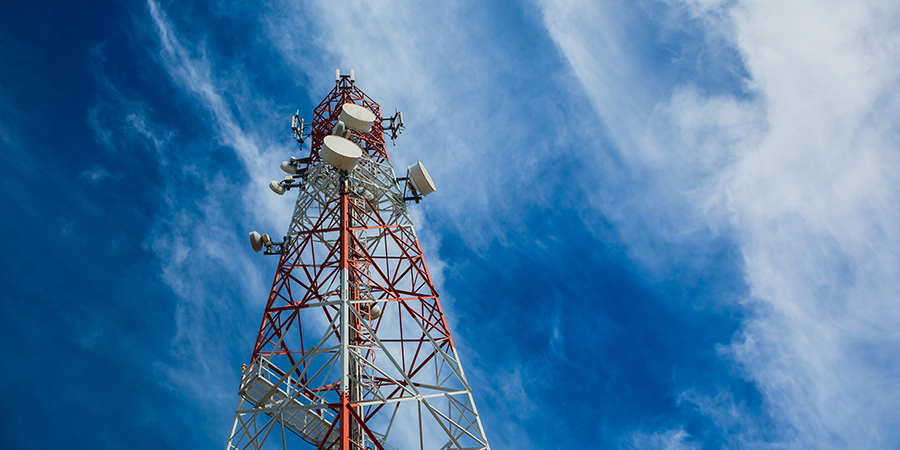Climate change and telecommunications have rarely been put together in one context. However, lately, given the climate emergency that the whole world is facing, telcos are trying to leverage their assets and offer new services and solutions while taking into account the environmental impact.
Telecom and technology companies are increasingly aware of the environmental challenge and some of them have drafted green strategies and plans to limit their carbon footprint and meet their commitment to sustainable development. On average, IT & Network (ITN) equipment and its hosting sites represent about 80% of the energy consumption and the total carbon footprint of a telecom operator (non-technical buildings and vehicles account for only 20 %), according to an article penned by Remy Sfez, business manager, expert transformation IT & Network, Sofrecom.
Zain Group is one of the major telcos in the Middle East that have realized the need to protect the environment. Zain’s climate action plan has set targets to reduce emissions, reduce waste, and align with UN Sustainable Development Goal number 13. The company is also committed to building climate change scenarios that would help limit global warming to 1.5℃ compared to pre-industrial levels.
The Group is well aware of the urgent need to address the climate crisis. Therefore, in order to achieve sustainable growth, Zain has to participate in global efforts to protect the planet and preserve its resources.
Recently, Zain Group was ranked as top MEA telecom operator in CDP’s climate change index. The operator attained a Management Scope ‘B’ rating, making it the highest-ranked and only telecom operator in the Middle East and Africa (MEA) to achieve this mark. Only 35% of the 9,600 companies and institutions included in the CDP list reached the management level score or higher. This proves Zain’s commitment to fulfilling its promise to make systematic changes.
One of the leading players in the industry today, Nokia, is also contributing to the global efforts aiming at preserving the environment. The vendor announced that its AirScale 5G mMIMO Base Station will achieve an average power consumption reduction of 50 percent by 2023, outlining its commitment to climate change and zero emissions. This is enabled by continuous improvements in software functionalities and new mMIMO product variants based on its latest SoCs.
Adopting a program for energy transformation concerns several parts of a telco’s business, mainly CSR and infrastructure. The first step to consider is identify the areas that consume the most energy based on available data and on consumption measurements.
Climate tech
According to PwC, climate tech encompasses a broad set of sectors which tackle the challenge of decarbonising the global economy, with the aim of reaching net zero emissions before 2050. The main goals of a climate tech is achieve low greenhouse gas emissions, shift to less resource-incentive business models, better resource usage through analytics and data and active carbon capture and storage.
Interest for eco-friendly innovations has risen lately and action against global warming and climate change has become both a challenge and an opportunity. A report by PwC mentions that climate techs represented only 6% of capital development in 2016, however they’ve grown of about 3750% since 2013.
The development of climate techs can truly contribute to lowering greenhouse gases and limiting the impact of climate change, through the investment in innovation and technology.
Environmental impact of 5G
The telecoms industry was among the first to address its own energy efficiency. The cellular industry was the world’s first, in 2016, to commit to achieving the UN Sustainable Development Goals (SDGs), setting an industry goal of net-zero emissions by 2050.
In a byline article published in Telecom Review by Li Xiangyu (Spacelee), vice president, Huawei Middle East, “National and international policies are targeting a dramatic increase in energy efficiency, and a sharp shift from fossil fuels to renewable sources of energy such as solar, wind and water. This will entail a completely new approach to energy use, which must be adopted by every industry and individual. This is where 5G is an important enabler.”
5G has introduced new approaches to many telecoms-related aspects, but one of the most important things it introduced was the interest in energy efficiency. For the first time, the planning and optimization of new mobile networks were taking into account energy efficiency in order to deploy 5G as the most sustainable network.
5G, coupled with artificial intelligence, edge computing and cloud, can enable businesses to achieve their climate goals. The intelligent use of resources enabled by 5G will allow telcos and businesses to reduce energy consumption through smart energy management systems, predictive analytics and automation.
Addressing the challenge
Industry stakeholders all have a role to play to meet the climate challenge. Collaboration, as always, is a key factor to achieve energy efficiency. Governments, major telcos and startups can establish partnerships to accelerate innovation while bearing in mind the ultimate goal of net-zero emissions.
One of the major steps to be taken is to adopt climate reporting whereby telcos include the risks of climate change in their financial statements. This step can motivate them to elaborate adequate strategies to lower the risk and decrease their carbon footprint.
Climate change might seem out of the telecoms context, however we are witnessing a shift in mentalities, especially with 5G which has proven to have a transformative effect, even in terms of protecting the environment and achieve the United Nations’ sustainable development goals.
